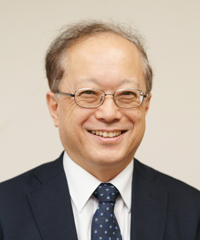As a pediatrician, I developed a strong interest in developmental disorders in the 1990s. Unlike autism (autism spectrum disorder), a developmental disorder that was known early on, attention deficit hyperactivity disorder (ADHD) was not well known even among doctors. At the university where I worked, I remember talking with a senior physician in the lounge of the pediatrics department about an article on autism among children in the United States. At the time, we both expressed surprise that 7% of children in the United States had a disorder called ADHD. This was a statistic that was hard to believe at the time. However, as the diagnostic criteria was clarified, it gradually became clear that there were also children with ADHD in Japan. Recent studies indicate that approximately 4% of children today have ADHD.
As our knowledge and experience of the disorder has increased, ADHD, which was to be thought to be a disorder in children, has come to be found in adults as well. Even in the United States where social recognition of ADHD is higher than in Japan, it was difficult to accept that there are also adults with ADHD. Today, however, it is known that 4.4% of adults show symptoms of ADHD. In Japan, this figure is reported to be 1.6% of adults. At first, ADHD in adults was viewed as a condition in which symptoms remained from ADHD in childhood. When ADHD in an adult was in question, whether the person had had ADHD in childhood was seen to be the determining factor. However, recent research indicates that it is not rare to see symptoms of ADHD in an adult who had no ADHD symptoms or such a diagnosis in childhood. Research in Europe and the United States has clearly shown that drug therapy is also effective in the treatment of ADHD in adults. I have not had much experience in the diagnosis of ADHD in adults, and I have learned this from international medical journals. Although drug therapy for ADHD in children is widely recognized in the medical community in Japan; in the case of ADHD in adults, the literature on developmental disorders in adults has noted that "drug therapy is not used because of its strong effects."
In this way, we are gradually extending our understanding of ADHD, and recently, we have made a further breakthrough in our understanding of ADHD in women.
To begin, it is known that ADHD in girls differs in several respects from ADHD in boys. First, we learned that the prevalence rate of ADHD in girls was lower than that of boys. According to the fourth edition of the Diagnostic and Statistical Manual of Mental Disorders (DSM 1994), which is used worldwide to diagnose mental health disorders including ADHD, the proportion of boys to girls with ADHD was somewhere between 2:1 and 9:1, but in a more recent edition (DSM 2012) the ratio of boys to girls is given as 2:1 and among adults, the rate is 1.6:1. Furthermore, in DSM (1994), it is reported that symptoms usually become noticeable by the age of seven, but the more recent edition (2012) has been revised, stating that diagnosis is possible by the age of 12. How can this revision be explained? This is because girls tend to show less obvious hyperactive behavior at a young age, and in many cases, symptoms such as inattentive behavior, carelessness, or difficulty concentrating may often not be clearly identified until much later.
The characteristics of ADHD in girls have been known for some time, but diagnostic standards for ADHD have centered on hyperactivity and impulsive behavior, which coincides with the diagnostic standards used for boy children. This is one reason for low number of ADHD (ADD) cases diagnosed in girls.
The logical conclusion from my argument thus far is that there is a high possibility that women, especially adult women, who have symptoms of ADHD may not be receiving adequate attention.
At present, research on ADHD treatment and prognosis is advancing, and thanks to well-controlled drug therapy, it is now possible to not only reduce symptoms of ADHD, but also to achieve a marked reduction in frequent secondary symptoms such as depression and anxiety disorder.
Although we claim to be living in a time of gender equality, in Japan, women in Japan are more responsible for the child-raising and housework, and for women with attention deficit disorders, these can be difficult.
I worry that among women who have maternity depression or post-partum depression, there may be some with undiagnosed ADHD.



 Yoichi Sakakihara
Yoichi Sakakihara










